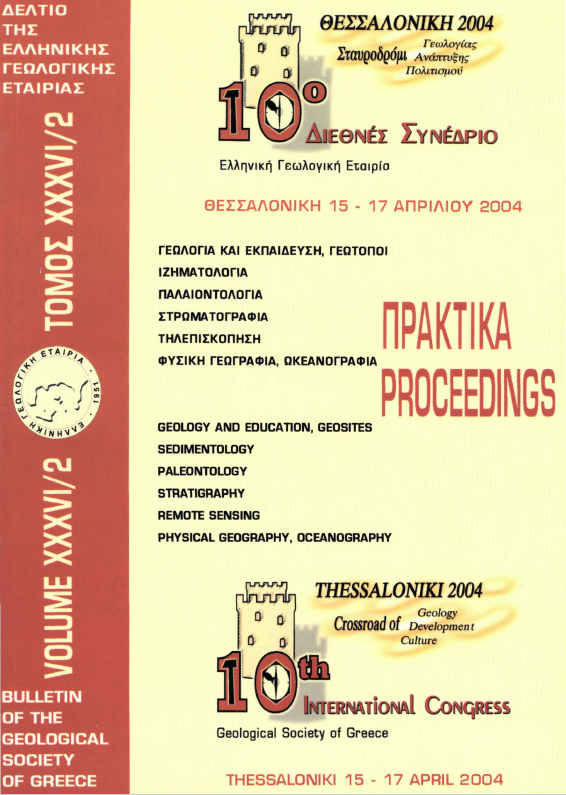QUATERNARY CALCARENITE ("POROS") OF MYKONOS, DELOS AND RHENIA, CYCLADES ISLANDS, GREECE
Περίληψη
Outcrops of friable calc-arenite of late Quaternary age, known as Poros rock, from Mykonos, Rhenia and Delos, are characterized sedimentologically and their cements are studied in thin section. Calcarenites of beach, coastal eolian dune, and pedogenic alluvium origin are distinguished sedimentologically. Beach calcarenite shows marine cementation by a uniform rim of micrite and bladed Mg-calcite. Some eolian dunes show precipitation of needle aragonite, probably from sea spray, but the dominant cements are sparry calcite from groundwater and vadose zone deposition of irregular micrite with meniscus and gravitational textures. Pedogenically cemented alluvium shows the characteristics of caliche, such as rhizoliths with clots and globules of micrite and circumgranular cracking. One outcrop of calcarenite from Panormos Bay in Mykonos shows beach fades at +2.5 to +4.0 m above present sea level, overlying cemented debris flow deposits. This occurrence is interpreted as Tyrrhenian in age (isotopie stage 5e) and implies regional long-term subsidence of 2 cm/ka, consistent with the lack of marine terraces in the area. Archeological sites on Delos show irregular variations of sea level of about 1 m in the past 2.5 ka, probably related to movement on faults.
Λεπτομέρειες άρθρου
- Πώς να δημιουργήσετε Αναφορές
-
Varti-Mataranga, M., & Piper, D. W. (2018). QUATERNARY CALCARENITE ("POROS") OF MYKONOS, DELOS AND RHENIA, CYCLADES ISLANDS, GREECE. Δελτίο της Ελληνικής Γεωλογικής Εταιρείας, 36(2), 725–731. https://doi.org/10.12681/bgsg.16803
- Ενότητα
- Παλαιοντολογία, Στρωματογραφία και Ιζηματολογία

Αυτή η εργασία είναι αδειοδοτημένη υπό το CC Αναφορά Δημιουργού – Μη Εμπορική Χρήση 4.0.
Οι συγγραφείς θα πρέπει να είναι σύμφωνοι με τα παρακάτω: Οι συγγραφείς των άρθρων που δημοσιεύονται στο περιοδικό διατηρούν τα δικαιώματα πνευματικής ιδιοκτησίας επί των άρθρων τους, δίνοντας στο περιοδικό το δικαίωμα της πρώτης δημοσίευσης. Άρθρα που δημοσιεύονται στο περιοδικό διατίθενται με άδεια Creative Commons 4.0 Non Commercial και σύμφωνα με την οποία μπορούν να χρησιμοποιούνται ελεύθερα, με αναφορά στο/στη συγγραφέα και στην πρώτη δημοσίευση για μη κερδοσκοπικούς σκοπούς. Οι συγγραφείς μπορούν να: Μοιραστούν — αντιγράψουν και αναδιανέμουν το υλικό με κάθε μέσο και τρόπο, Προσαρμόσουν — αναμείξουν, τροποποιήσουν και δημιουργήσουν πάνω στο υλικό.



